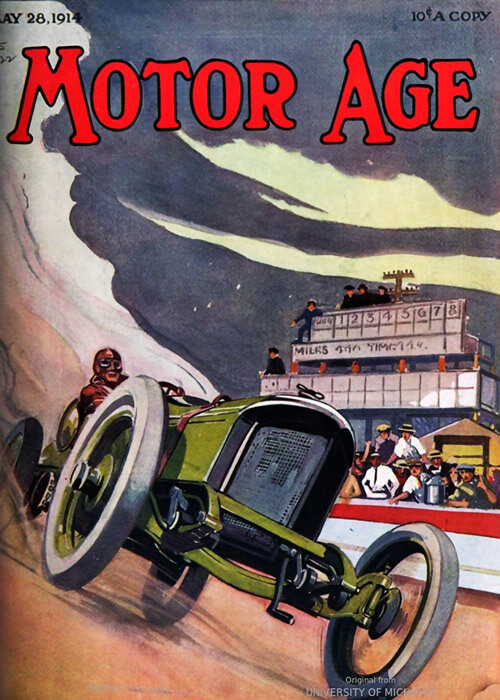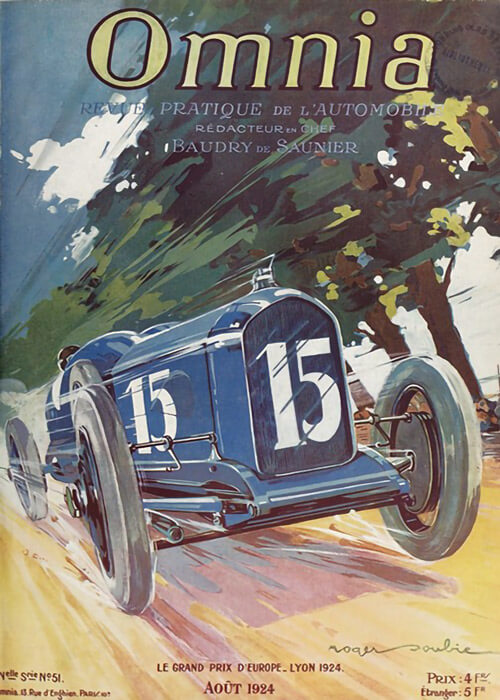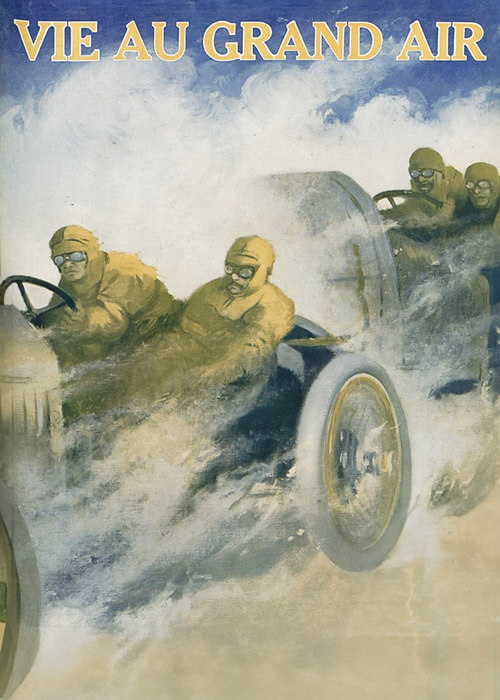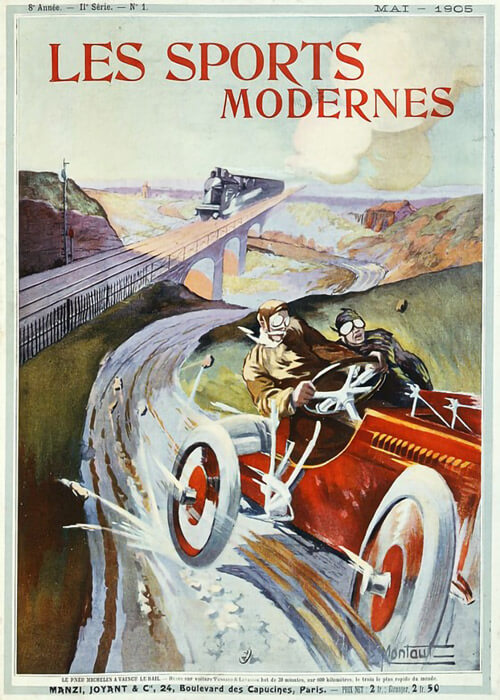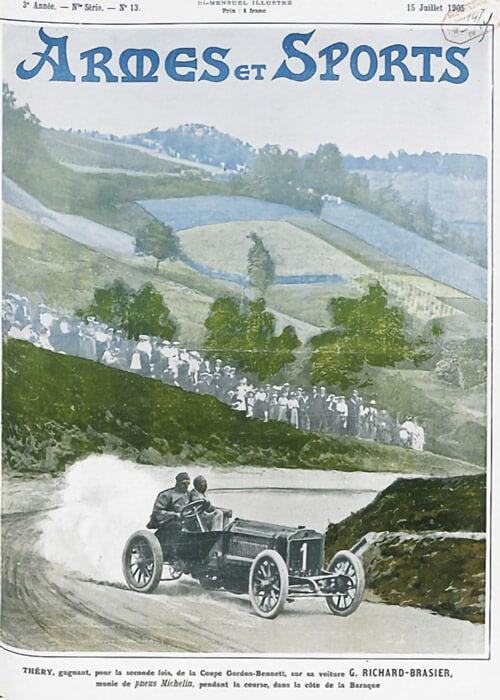Published by the end of January 1909, Automobile Topics shows that in the speedway planning, every thinkable issue has been taken into consideration, from grandstands, via parking lots and even toilets. The complete track of 5 miles 3 feet length consisted of a 30 ft. wwide outer 2-mile tracklay and a less wider inner track. From all grandstands as much as possible straights and corners could be overseen, rendering maximum racing excitement! But shortly later, it appeared that this track layout couldn’t be realised.

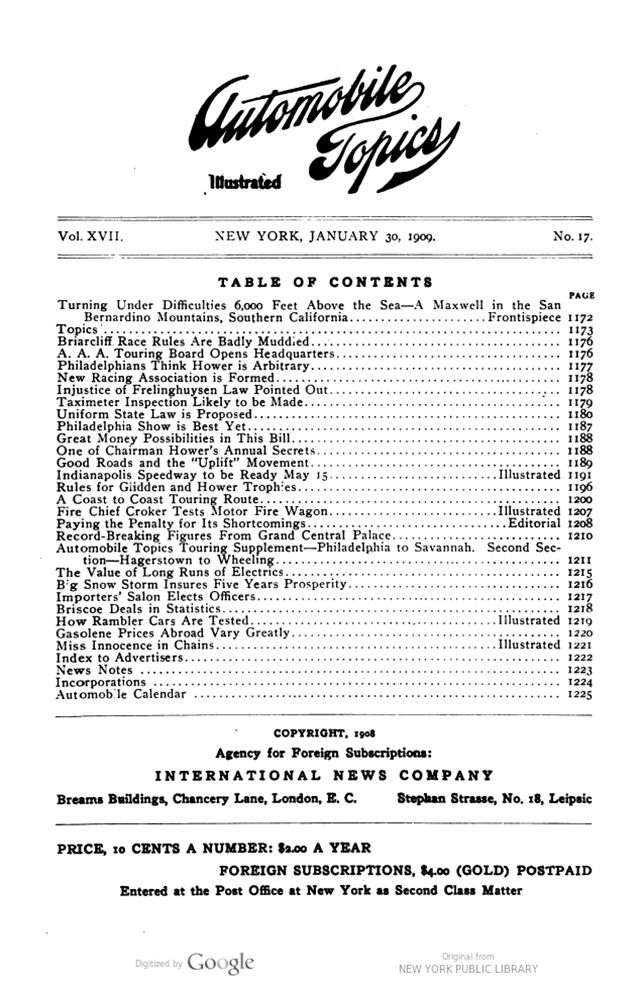



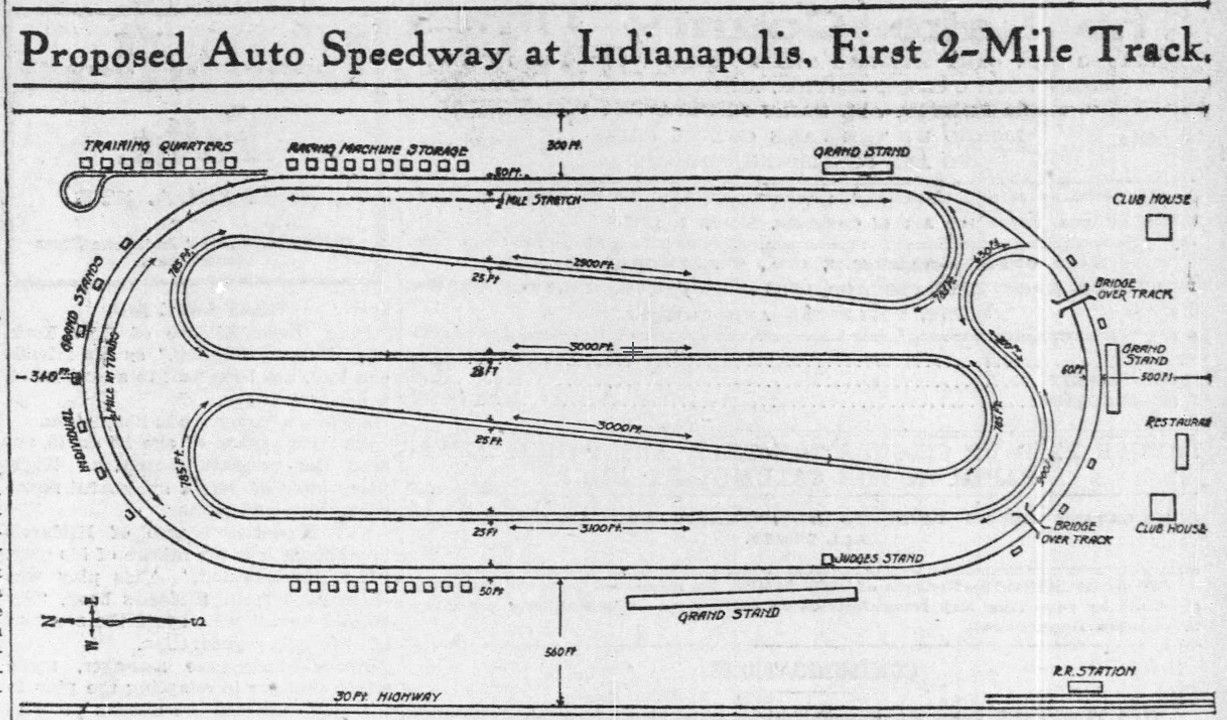
Text and jpegs by courtesy of hathitrust.org www.hathitrust.org, compiled by motorracinghistory.com
AUTOMOBILE TOPICS, Vol. XVII, No. 17, January 30, 1909
Indianapolis Speedway to Be Ready May 15
INDIANAPOLIS, Ind., Jan. 25. – After more than one year’s consideration, plans have been completed for a five-mile automobile speedway in this city. It will be built by the Indianapolis Motorway Speedway Co., which has $200,000 capital, and will be completed by May 15.
With the purchase of the ground, deeds for which were recorded recently, detailed plans have been announced. The site is on a flat plateau 3½ miles northwest of the center of the city, connected with the boulevard by an improved road one mile long, and the course will also be located on a steam and an electric interurban railroad.
Present plans include an estimated expenditure of $500,000, and the work of construction, which will be conducted under the supervision of P. T. Andrew, a New York engineer, will begin February 15. The contracts call for the completion of the course by May 15, and the first event will, it is expected, be run early in June.
A schedule of events will be announced following the automobile show at Chicago. It is also stated that the course will be available for manufacturers desiring to test out new parts or ideas or for any other special purpose.
The inside road course is 25 feet wide in the straights and 35 feet wide on the turns, well banked, and these turns will stand an average speed of 60 to 65 miles per hour. The complete outside and inner track measures 5 miles 3 feet from the pole line. The entire plot of ground is a mile long and half a mile wide and contains 320 acres of ground. The Indianapolis Motor Speedway Company is organized under the laws of Indiana with capital stock of $200,000. The stockholders and officers of the company are Carl G. Fisher, president of The Prest-O-Lite Company, president; A. C. Newby, of the National Motor Vehicle Company, vice-president; F. H. Wheeler, of the Wheeler-Schebler Carburetor Company, 2nd vice-president, and James A. Allison, secretary and treasurer.
The object of the Motor Speedway Company is to furnish suitable track and road facilities for the driving and testing of American cars for long distance or high speed contests, and to have a suitable track and road course where these tests and trials can be made at any time of the year such trials are necessary; also to furnish suitable grounds and quarters for outdoor shows and meetings of automobile engineers, manufacturers or dealers.
The general detail of the equipment of these grounds will be more complete than has ever yet been attempted in this line. The grounds are conveniently located on a flat plateau three and a half miles northwest of the center of Indianapolis and is connected with one-mile improved road with the elaborate boulevard system of the city.
The New York Central Railroad passes the southwest corner of the ground and will have a 2,000-foot switch on the ground with an unloading platform and railroad station. The I. & C. interurban line also passes the southwest corner of the grounds and will have a streetcar and interurban station on the grounds, making it convenient for both steam and electric trains to land passengers on the ground, and also for the direct shipment of racing cars or pleasure vehicles to the grounds to be unloaded inside the grounds.
Ample sidetrack facilities will be placed for the convenience of special club cars or private cars, so that same may arrive at the grounds for any important race meet and be used by club members or private owners during the race meet for their own private hotels.
The grounds will be equipped with sufficient training quarters to give each entry private facilities for the storage and care of their racing cars.
There will be 3 main grandstands, with seating capacity of 35,000, and 20 individual grandstands placed at convenient locations about the track, each of these grandstands raised 10 feet from the ground and having accommodations for 50 persons, making it convenient for clubs to attend in a body and have their grandstand for their own members, and raised high enough so that they can all command a view of the entire track.
This track will have the unique distinction of being the only speedway and racing course in the world where the occupants of the grandstands and spectators can see the cars at their highest speed, and at the same time see the cars make the curves on the inside course.
Parking space for 1,500 automobiles will be provided.
This course will be the safest high-speed motor racecourse in the world. The plot of ground is entirely level. There will be no fences or buildings closer than 50 feet to either the outer track or inside roadway. The tract will be so constructed that it will graduate off to the level ground, except where the turns are banked, and these will be so graduated back to the level as to insure every possible precaution for the safety of drivers and spectators.
The parking spaces and grandstands will be sub-divided from the main grounds by eight wire fences, making it impossible for spectators to get onto the track at any point.
One club house on the grounds will be headquarters of the Indianapolis Motor Car Club. Another club house will be devoted for the uses of officers and contestants. An eating house and cafe will be installed suitable to take care of all requirements.
The two-mile course will be provided with lighting facilities of 420 independent electric arc lights, provided with reflectors throwing the light only ahead of the drivers, making it possible to will be provided. conduct successfully 24-hour record trials.
It is expected that all manufacturers of motor cars, in the West especially, and in America generally, will be widely interested in this track, as it will furnish exceptional facilities for them to test new parts or new ideas for either strength or special service required, and the Indianapolis Motor Speedway Company will arrange a schedule of privileges for manufacturers, so that they may be able at any time to ship cars to the grounds and use the track as they see fit for special purposes, at a very nominal cost.
This track will make it possible for the American manufacturers who enter the grand prize or long-distance events, to prepare their car in advance and give it a thorough testing under any and all of the conditions which they would meet in these contests. The American manufacturers could go into these con- tests knowing what their car had done under similar conditions, and not go in (as has been the custom in the past) to find out during the contest where the weak parts were in the construction of their car.
The manufacturers abroad have had this identical condition of exceptional roads for their testing and trial purposes for years, which has given them an advantage that will no longer exist with the completion of this speedway.
The general plans and layout of the track have been under consideration for the past year, but it was only in January that the deeds for the ground were executed. A great deal of preliminary work, however, had been done, and at this writing a force of engineers are staking out the track and buildings and active work by a large force of men will commence not later than February 15. The track and entire grounds are under contract to be completed by May 15, and it is the expectation of the management to hold the first public event early in June.
An immediate effort will be made to secure the National Stock Chassis race of 1909, and the Motor Speedway Company will immediately take steps to affiliate with the American Automobile Association and see if this important event cannot be the opening at the Indianapolis Speedway.
A bid will also be made to have one international contest for the benefit of the West each year, and with this end in view, the Wheeler-Schebler Cup has been subscribed. This cup will be made by Tiffany, of New York, and will be the finest and handsomest trophy ever offered for any athletic or sporting event in the world, Mr. Wheeler having guaranteed that the actual coin value of this cup will exceed $5,000.
P. T. Andrew, a New York engineer, is in active charge of all work.
A schedule of events for the coming season will be arranged immediately after the Chicago auto show, and in the meantime the secretary of the Motor Speedway Company would be pleased to receive any suggestions from the various manufacturers who are interested in this project. Suggestions along the lines of the limits of weights and engine size and capacity most desirable for the benefit of the industry are especially requested, and their ideas as to limits in different classes.
Proposed Auto Speedway at Indianapolis, First 2-Mile Track,
TRAINING QUARTERS – RACING MACHINE STORAGE – ½ MILE STRETCH – GRAND STANDS – ½ MILE IN TURNS – INDIVIDUAL GRAND STANDS – JUDGES STAND GRAND STAND – CLUB HOUSE – BRIDGE OVER TRACK – GRAND STAND – RESTAURANT – BRIDGE OVER TRACK – CLUB HOUSE – RR. STATION
